[Editor’s Note: Mad Scientist Laboratory is pleased to publish today’s post by guest blogger Sarah L. Sladek, addressing how many industries and government organizations remain enmeshed within Twentieth Century hierarchical management constructs, despite the Nation having moved on to become a Talent Economy. Recent challenges in attracting cyber-talent is a weak signal to our Army regarding recruiting, developing, and retaining the right mix of talent necessary to achieve the Multi-Domain Operations (MDO)-Capable Force by 2028 and set the conditions for fielding an MDO-Ready Force in 2035. Read Ms. Sladek’s prescription for successfully generating, recruiting, and retaining our next generations of talent — Enjoy!]
The year was 2000. The startup that launched in 1998 had outgrown the garage, relocating to a nondescript building in an office park a couple of miles off the highway.
 Outside that building, on an asphalt parking lot, employees played roller hockey. The games were full contact. Employees wore pads and would come back inside drenched in sweat and sometimes bloodied and bruised.
Outside that building, on an asphalt parking lot, employees played roller hockey. The games were full contact. Employees wore pads and would come back inside drenched in sweat and sometimes bloodied and bruised.
Inside the building, the game was twice as tough. Yes, there was free food for all employees and a massage therapist. The tough part was the company’s founder, who would often provoke arguments with the staff over business and product decisions. He pushed his employees to develop their visions of future technologies.
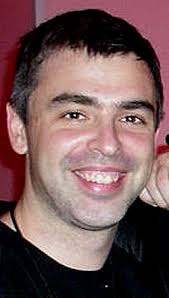 A few years after the idea of ranking web pages by their inbound links came to Larry Page in a dream, the founder of Google wrote down his five rules for management. He was in his twenties at the time. The list of rules included:
A few years after the idea of ranking web pages by their inbound links came to Larry Page in a dream, the founder of Google wrote down his five rules for management. He was in his twenties at the time. The list of rules included:
– Don’t get in the way if you’re not adding value;
– Ideas are more important than age; and
– The worst thing you can do is say no. If you say no, you have to help find a better way to get it done.
Somewhere at the tail end of the 20th century—perhaps right in that asphalt parking lot where the first Google employees played roller hockey—a radical change occurred and the Talent Economy emerged. Unlike other eras that have come before, this one is almost entirely powered by innovation and ideas.
Prior to this shift work was just a job, leadership was the equivalent of power, and the prioritization of talent didn’t really exist. Consider this timeline:
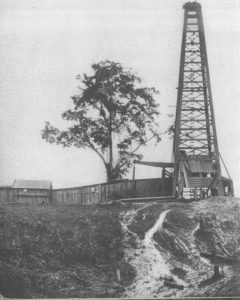 1910: Natural resources were a company’s most valuable assets. America’s leading companies grew large by spending increasing amounts of capital to acquire and exploit oil, mineral deposits, forests, water, and land.
1910: Natural resources were a company’s most valuable assets. America’s leading companies grew large by spending increasing amounts of capital to acquire and exploit oil, mineral deposits, forests, water, and land.
1946: Post-World War II, companies took a lesson from the military and applied systems to everything for increased efficiency, predictability, and productivity. This move resulted in a command-and-control leadership style Baby Boomers (1946-1964) were raised knowing.
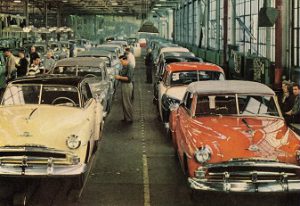 1955: An insatiable appetite for American-made cars spurred the manufacturing industry. Companies needed labor, but mainly for routine-intensive jobs. When turnover occurred, those jobs were easy to fill, and individual workers had little bargaining power.
1955: An insatiable appetite for American-made cars spurred the manufacturing industry. Companies needed labor, but mainly for routine-intensive jobs. When turnover occurred, those jobs were easy to fill, and individual workers had little bargaining power.
1963: A relatively new breed of corporation made the list of largest companies: IBM. This company was wasn’t reliant on automation or natural resources. Rather, scientists, engineers, marketers, and salespeople were at the heart of IBM’s competitive advantage.
 1965: Business growth dominated the economy and more jobs began to require creativity, as well as independent judgment and decision-making skills. The concept of talent (utilizing skills, knowledge, and ideas) began to emerge.
1965: Business growth dominated the economy and more jobs began to require creativity, as well as independent judgment and decision-making skills. The concept of talent (utilizing skills, knowledge, and ideas) began to emerge.
1998: Google was founded by Larry Page and Sergey Brin, ages 25 and 24 respectively, ushering in an era of rule-breaking and innovation among people who would have once been regarded as too young to lead or influence.
 2016: Topping the largest companies list were Apple, Microsoft, and Google, all talent-dependent companies. People under the age of 35 were starting more companies, managing bigger staffs, and realizing higher profits than any of their predecessors.
2016: Topping the largest companies list were Apple, Microsoft, and Google, all talent-dependent companies. People under the age of 35 were starting more companies, managing bigger staffs, and realizing higher profits than any of their predecessors.
Clearly, change has happened. We’ve moved into a Talent Economy and the focus is on human capital. The irony is while most organizations are now prioritizing the recruitment and retention of talent, few have actually been successful at it. In fact, employee turnover has become a major concern. Gallup reports that young professional turnover alone costs U.S. companies an estimated $30.5 billion per year.
Why? Because there’s a gap in our workforce.
In the past, organizations were built for scalable efficiency. Jobs were well-defined and organized to support processes and forecasts. Workers were trained to protect information and any collaboration with those outside of the organization was highly monitored or even discouraged.
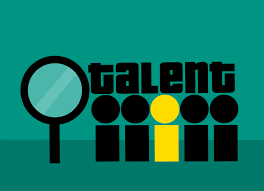 Now we’ve moved into the 21st century—the Talent Economy—and the generations born into this era have little to no memory of the last century’s methodologies. They struggle to comprehend why decisions can’t be made on the fly, why they can’t have a seat at the decision-making table, and why it’s always been done ‘that way.’ They’ve been raised in an era fueled by collaboration, globalization, mobility, flexibility, transparency, and creativity. Anything else seems foreign and irrelevant to them.
Now we’ve moved into the 21st century—the Talent Economy—and the generations born into this era have little to no memory of the last century’s methodologies. They struggle to comprehend why decisions can’t be made on the fly, why they can’t have a seat at the decision-making table, and why it’s always been done ‘that way.’ They’ve been raised in an era fueled by collaboration, globalization, mobility, flexibility, transparency, and creativity. Anything else seems foreign and irrelevant to them.
Hence, we have a problem: an ever-widening gap between the 20th century-managed organizations, and the 21st century-raised workforce. This gap has widespread effects, including employee turnover, disengagement, and challenges finding talent. This means that every organization – including the military – needs to seriously reconsider how to find and keep talent.
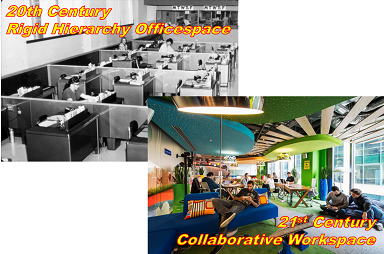
This situation is likely to get worse before it gets better largely because Baby Boomer retirements are escalating. Take the Army for instance. In 2018, the Army started out its fiscal year with an ambitious task: To bring in 80,000 new active duty soldiers. The military branch fell short of its goal partly due to a large number of senior personnel retirements. The Army Times reported that retention had “stopped the bleeding of missed recruiting goals,” but the balance isn’t sustainable in the long-term because the Army “could end up with more leaders than soldiers to lead.”
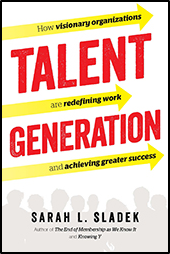 Turnover, decline, and uncertainty about the future doesn’t have to be the reality for any organization. I’ve spent several years researching generational behaviors and the employee engagement practices common among the most successful organizations in existence today. In brief, here are six of my key findings, which I also outline in my latest book, Talent Generation (2018).
Turnover, decline, and uncertainty about the future doesn’t have to be the reality for any organization. I’ve spent several years researching generational behaviors and the employee engagement practices common among the most successful organizations in existence today. In brief, here are six of my key findings, which I also outline in my latest book, Talent Generation (2018).
If you want to engage the next generation of talent, this is exactly what you must do:
Put Ego Aside
 In the 20th century, leadership was often the equivalent of power, fueled by a top down, ‘do-it-because-I-said-so’ approach to management. Today, the organizations boasting the highest employee engagement are led by leaders who exhibit a strong sense of passion, humility, and urgency. They are willing to learn from others and take risks. Unlike their 20th-century predecessors, these leaders are visionary, collaborative, and swift, never losing sight of their organization’s core purpose or wavering in their desire for change.
In the 20th century, leadership was often the equivalent of power, fueled by a top down, ‘do-it-because-I-said-so’ approach to management. Today, the organizations boasting the highest employee engagement are led by leaders who exhibit a strong sense of passion, humility, and urgency. They are willing to learn from others and take risks. Unlike their 20th-century predecessors, these leaders are visionary, collaborative, and swift, never losing sight of their organization’s core purpose or wavering in their desire for change.
Practice Acceptance
 The organizations boasting high employee engagement are those that spend a considerable amount of time thinking about change and preparing for it. They also spend a considerable amount of time thinking about how to hire the best and build the best teams. The fact is, employee engagement is an impossible feat in the midst of distrust, stereotypes, and hierarchies. Today’s most successful organizations are accepting of new ideas and new people and intentional about building relationships.
The organizations boasting high employee engagement are those that spend a considerable amount of time thinking about change and preparing for it. They also spend a considerable amount of time thinking about how to hire the best and build the best teams. The fact is, employee engagement is an impossible feat in the midst of distrust, stereotypes, and hierarchies. Today’s most successful organizations are accepting of new ideas and new people and intentional about building relationships.
Put People First
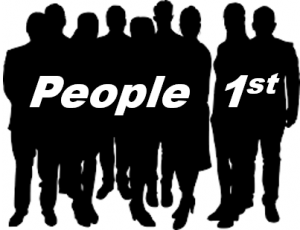 Being truly talent-focused means prioritizing your people above all else. In a talent-focused organization, the entire team is empowered and encouraged, always part of the discussion, and there’s an effort to incorporate young talent into everything.
Being truly talent-focused means prioritizing your people above all else. In a talent-focused organization, the entire team is empowered and encouraged, always part of the discussion, and there’s an effort to incorporate young talent into everything.
Stay Future Focused!
 It’s imperative that all organizations ask: How do we rebuild around what we need to be next, rather than what we used to be? Organizations boasting high employee engagement are focused on creating the future, not responding to it. They pay attention to trends, set aside time to contemplate their futures, and dialogue often with younger generations.
It’s imperative that all organizations ask: How do we rebuild around what we need to be next, rather than what we used to be? Organizations boasting high employee engagement are focused on creating the future, not responding to it. They pay attention to trends, set aside time to contemplate their futures, and dialogue often with younger generations.
Collaborate
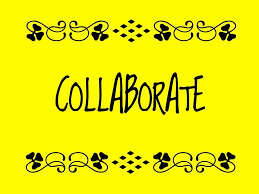 Innovation naturally happens through and exists within collaboration. And the best organizations harness innovation from their employees and outsiders—especially those from younger generations. True collaboration isn’t limited to doing one project every once in a while; it’s a sustained strategy which maximizes individual contribution while leveraging the collective intelligence of everyone involved.
Innovation naturally happens through and exists within collaboration. And the best organizations harness innovation from their employees and outsiders—especially those from younger generations. True collaboration isn’t limited to doing one project every once in a while; it’s a sustained strategy which maximizes individual contribution while leveraging the collective intelligence of everyone involved.
Build a Better Future
 We have moved rapidly into a global, technologically advanced, knowledge-based economy. Presently, our schools are preparing students for a world we can’t even imagine, and they’re struggling to adapt and make the school-to-work connection. Many of today’s leading organizations have aligned with student-focused initiatives, and it’s critical that representatives of military, business, and industry find a way to get involved in school programming, outreach, partnering, and education. New research indicates that students hone in on a career path as early as sixth grade, so the connection must start before a student’s junior or senior year in high school.
We have moved rapidly into a global, technologically advanced, knowledge-based economy. Presently, our schools are preparing students for a world we can’t even imagine, and they’re struggling to adapt and make the school-to-work connection. Many of today’s leading organizations have aligned with student-focused initiatives, and it’s critical that representatives of military, business, and industry find a way to get involved in school programming, outreach, partnering, and education. New research indicates that students hone in on a career path as early as sixth grade, so the connection must start before a student’s junior or senior year in high school.
As we move from the computer age into the cyber-age, the workforce crisis will become even more apparent as new industries, jobs, and skills emerge. The real issue is no longer talent management; it’s talent generation. It’s imperative that organizations engage younger generations of talent, and help train and prepare future talent.

Talent is our nation’s greatest asset. Talent is the heart and soul of every organization, and developing that talent has become more urgent and important than ever.
We cannot become a nation that relies on others to manufacture, create, and innovate. We cannot sit back and wait for someone else to solve this problem. If we do, we continue to fail.
We cannot be apathetic towards our future, thinking it will be someone else’s problem to solve. If we do, we continue to fail.
Without talent, we have much to lose. Without talent, we have no purpose, no future, and no hope. Without talent, society fails. So let’s put an end to the workforce crisis and seek to innovate, embrace change, and move our organizations into this next century. Let’s make work work again.
In the post above, Ms. Sladek shared her insights for successfully generating, recruiting, and retaining human capital, the sine quo non of innovation. Mad Scientist wants to hear your thoughts on The Operational Environment: What Will Change and What Will Drive It – Today to 2035? Learn more about our current crowdsourcing exercise here and be sure to get your submissions in NLT 1700 EDT Next Monday — 15 July 2019!
If you enjoyed this post, please also see:
– BrAIn Gain > BrAIn Drain: Strategic Competition for Intellect
Sarah L. Sladek is the founder and CEO of XYZ University, LLC, a future-focused management consulting firm. In addition, she is the author of five books and several research papers on generations, membership and employee engagement, and the future of work. Her latest book is Talent Generation: How Visionary Organizations Are Redefining Work and Achieving Greater Success. Twitter: @SarahSladek. Web: www.xyzuniversity.com

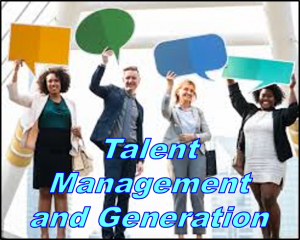

 Climate change is most often discussed in terms of its ecological and environmental impacts; rarely is it touched upon as a direct national security threat. The DoD has formally recognized the severity of climate change with references to it as a “threat multiplier.”
Climate change is most often discussed in terms of its ecological and environmental impacts; rarely is it touched upon as a direct national security threat. The DoD has formally recognized the severity of climate change with references to it as a “threat multiplier.” The 2019 DoD Arctic Strategy explicitly expresses our desire to maintain supremacy in the region and counter Russian and Chinese incursions.
The 2019 DoD Arctic Strategy explicitly expresses our desire to maintain supremacy in the region and counter Russian and Chinese incursions. 2. The health of our troops is far from guaranteed. A number of infectious diseases, such as malaria, West Nile virus, cholera, and Lyme disease, are expected to worsen as climate change continues to raise global temperatures and cause more extreme weather.
2. The health of our troops is far from guaranteed. A number of infectious diseases, such as malaria, West Nile virus, cholera, and Lyme disease, are expected to worsen as climate change continues to raise global temperatures and cause more extreme weather. In 2016, thawing permafrost in northern Siberia melted to reveal a reindeer carcass that had been infected with anthrax, leading to dozens of hospitalizations and the death of a 12-year-old boy, as well as over 2,300 reindeer.
In 2016, thawing permafrost in northern Siberia melted to reveal a reindeer carcass that had been infected with anthrax, leading to dozens of hospitalizations and the death of a 12-year-old boy, as well as over 2,300 reindeer. Naval Air Station Key West, Joint Base Langley-Eustis, Dam Neck Annex, and Parris Island – are at risk of losing between 75 and 95 percent of their land.”
Naval Air Station Key West, Joint Base Langley-Eustis, Dam Neck Annex, and Parris Island – are at risk of losing between 75 and 95 percent of their land.” for those special operations, and long-range bomber flights into Afghanistan.”
for those special operations, and long-range bomber flights into Afghanistan.” 4. Climate change impacts will lead to mass migration. A report by the World Bank found that climate change increases migration through various existing drivers, such as “depressing rural wages, raising agricultural prices, shaping exposure to hazards, and stressing ecosystems.”
4. Climate change impacts will lead to mass migration. A report by the World Bank found that climate change increases migration through various existing drivers, such as “depressing rural wages, raising agricultural prices, shaping exposure to hazards, and stressing ecosystems.” Most importantly, rural to urban migration will only continue to increase as population growth and resource scarcity compel more and more people to seek a better life in cities.
Most importantly, rural to urban migration will only continue to increase as population growth and resource scarcity compel more and more people to seek a better life in cities. a. The Arab Spring. With an event as complex as the Arab Spring, drawing precise causal arrows is virtually impossible. However, vulnerability of the Middle East and North Africa region to various climate-impacted phenomena show that security is directly linked to stability. The failure of governments to meet the basic needs of citizens by responding to climatic issues such as drought, desertification, and food shortages is what drove many to take part in the series of political uprisings.
a. The Arab Spring. With an event as complex as the Arab Spring, drawing precise causal arrows is virtually impossible. However, vulnerability of the Middle East and North Africa region to various climate-impacted phenomena show that security is directly linked to stability. The failure of governments to meet the basic needs of citizens by responding to climatic issues such as drought, desertification, and food shortages is what drove many to take part in the series of political uprisings. b. The Syrian civil war. Air Force Chief of Staff General David Goldfein told the Senate Armed Services Committee that the brutal civil war raging in Syria is a prime example of the kind of climate change-induced conflicts that the U.S. may have to respond to militarily. A ten-year drought in the region led Syrians to flock to cities unable to adequately meet the demand for resources, leading the Syrians to revolt due to the government’s inability to support them.
b. The Syrian civil war. Air Force Chief of Staff General David Goldfein told the Senate Armed Services Committee that the brutal civil war raging in Syria is a prime example of the kind of climate change-induced conflicts that the U.S. may have to respond to militarily. A ten-year drought in the region led Syrians to flock to cities unable to adequately meet the demand for resources, leading the Syrians to revolt due to the government’s inability to support them. c. Boko Haram. Climate change has been found to be linked to political violence in Nigeria. Poor responses to climate change have increased risks of conflict, such as low economic opportunity and negative relations between the government and its citizens.
c. Boko Haram. Climate change has been found to be linked to political violence in Nigeria. Poor responses to climate change have increased risks of conflict, such as low economic opportunity and negative relations between the government and its citizens.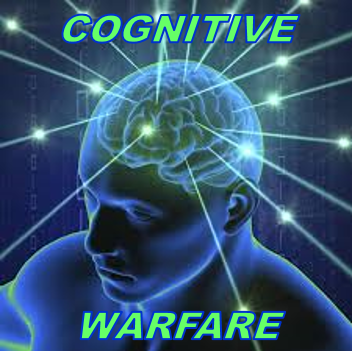
 narrative contest among the population. In the process, traditional concepts within the art and science of violent political conflict associated with boundaries, thresholds, levels, and phases are all deeply disrupted.
narrative contest among the population. In the process, traditional concepts within the art and science of violent political conflict associated with boundaries, thresholds, levels, and phases are all deeply disrupted. While many in the NSID community are willing to accept we are fighting a cognitive war, few are willing to recognize the extent to which it is being lost. Losing the cognitive war raises another fashionable topic emerging lately – strategic surprise. This is not the
While many in the NSID community are willing to accept we are fighting a cognitive war, few are willing to recognize the extent to which it is being lost. Losing the cognitive war raises another fashionable topic emerging lately – strategic surprise. This is not the Cognitive warfare is not only an attack on
Cognitive warfare is not only an attack on The target of this type of warfare is obvious enough. It is the
The target of this type of warfare is obvious enough. It is the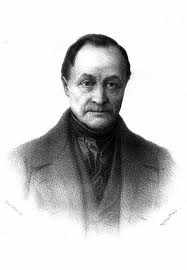
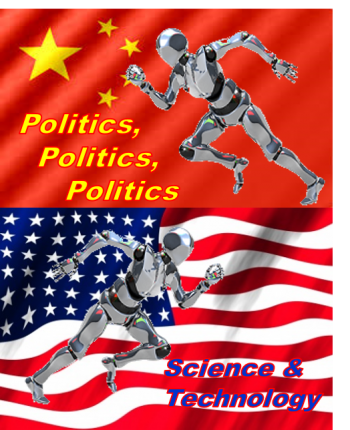 When Occidentalism and Positivism combine in the race for the next false dawn in technological supremacy, blind spots are produced. Believers in an ‘AI race’ should be wary. We in the West see this as an S&T contest, while largely ignoring its socio-political implications. For the Chinese, AI is politics, politics, politics. Is there something about non-Occidental cultural orientations that makes AI applicable to human affairs in ways not amenable to us? It’s an important strategic question. Positivism, by masking the salience of cultural orientation, is an exploitable weakness of our epistemic communities in need of addressing.
When Occidentalism and Positivism combine in the race for the next false dawn in technological supremacy, blind spots are produced. Believers in an ‘AI race’ should be wary. We in the West see this as an S&T contest, while largely ignoring its socio-political implications. For the Chinese, AI is politics, politics, politics. Is there something about non-Occidental cultural orientations that makes AI applicable to human affairs in ways not amenable to us? It’s an important strategic question. Positivism, by masking the salience of cultural orientation, is an exploitable weakness of our epistemic communities in need of addressing.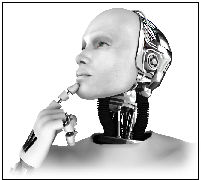 When ‘behavioural scientists’ get excited about manipulating people, either for benign or malign ends, what is the effect on the fabric of trust open society depends on? Military organizations now scrambling to incorporate ‘the cognitive’ into their operational concepts face a steep curve and many roadblocks. Friction is not always a bad thing. Hubristic behavioural interventions into complex anthropological systems involving AI should be approached with great caution. Hidden assumptions are cognitive vulnerabilities, and what appears to be a branch of S&T competition could turn out to be a strategic cul de sac we might want to back out of later.
When ‘behavioural scientists’ get excited about manipulating people, either for benign or malign ends, what is the effect on the fabric of trust open society depends on? Military organizations now scrambling to incorporate ‘the cognitive’ into their operational concepts face a steep curve and many roadblocks. Friction is not always a bad thing. Hubristic behavioural interventions into complex anthropological systems involving AI should be approached with great caution. Hidden assumptions are cognitive vulnerabilities, and what appears to be a branch of S&T competition could turn out to be a strategic cul de sac we might want to back out of later.